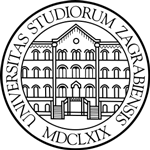PACKAGING THROUGH TIME
Abstract
Packaging can be briefly defined as a science, method and technology for product preservation.1, 20 The function of packaging is to protect the product that is packed in it and to protect the environment from the content inside the packaging. As a result, the products can be gaseous, liquid or solid3. The packaging must be suitable for use, i.e. handling, transport and distribution. It should inform the potential and the actual buyer and it should “sell the product”. 2
An important part of the packaging design is the material from which it will be made. The basic conditions that packaging must meet are the following: strength on material pressure, elasticity, plasticity, toughness, resistance to train, toughness, mechanical endurance and printing.2
Packaging must be protected from oxidation, moisture, odor, chemical agents and microbes. To meet these requirements, polymer materials and nanotechnology are now being used.4,18
Packaging can also be made according to the materials, purpose in traffic, durability and function.30
Distribution according to materials: wood, paper, cardboard, fabric, clay, glass, metal, polymers, multilayer materials.
Distribution according to the traffic purpose: sales or primary, group or secondary, transport or tertiary.
Distribution according to durability: return, non-refundable (onetime).
Distribution according to function: warehouse transport, sales, use.5, 6, 36

This work is licensed under a Creative Commons Attribution-NonCommercial-NoDerivatives 4.0 International License.






